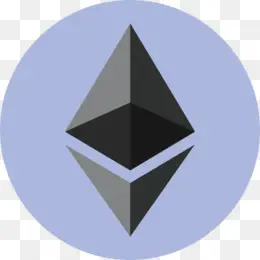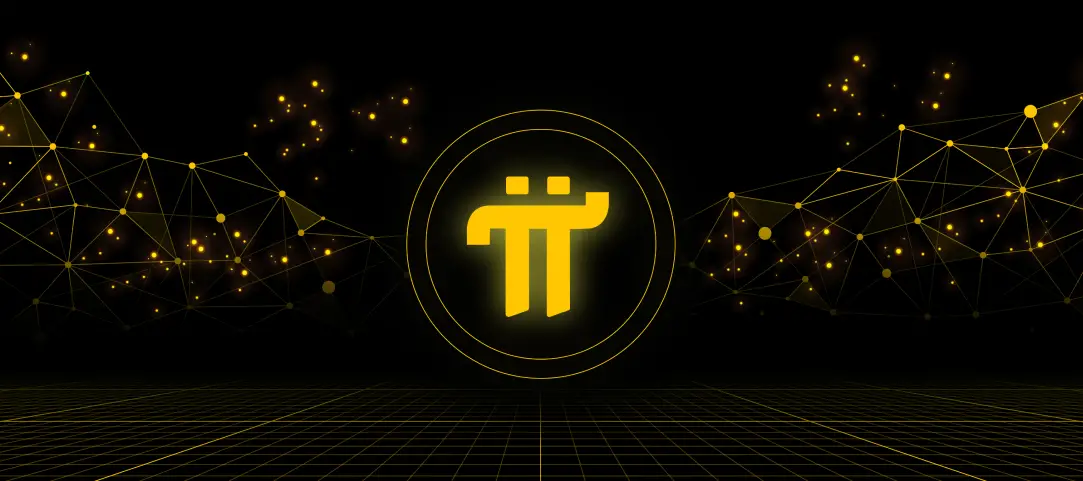Table of Contents
UPDATE
The Trade crypto team does not approve Pi Network.
Since this article was written, little has changed about the Pi network. It’s still not live on the mainnet promised this year, and half of the users are still waiting for the KYC process to be completed (some of them have been waiting since March). To be clear, if it doesn’t come to the mainnet, it has no value for users. So far, only those who developed the network have generated income, not the Pi network participants.
If you open social media, you’ll see that most comments are dedicated to sharing their referral numbers (since the Pi Network is built using a multi-level marketing model). The other half of users are sad that they lost their time with Pi coins.

Apart from these criticisms, there is another one. Yes, mining Pi coins is easy. You need to download the app, pass the KYC check, and then click the “Mine” button in the app. Every minute you click on “Mine,” the ad will pop up. Users don’t have to pay money to participate in the Pi network. But they’re sharing personal data and involving others in the Pi Network, which has only fed users with crumbs. That “soon” may never come to pass.
Although they have published a whitepaper, it is not an actual whitepaper. No technical details have been revealed about how the network works. Can you imagine a real cryptocurrency that works like this?
Participants in the Pi network cannot exchange their Pi coins for fiat currency. Recently, Pi/USDT spot trade was opened on Huobi. But you can’t do anything with it. If you are buying Pi with USDT, you can’t withdraw or deposit it. It would just hang in your cryptocurrency portfolio on exchange.
Furthermore, the official Pi network channel says:
CoinMarketCap lists Pi Coin. But it emphasizes, “There have been reports questioning the legitimacy of Pi Network. Please note that the mainnet hasn’t yet launched, and the price shown below for certain exchanges reflects the value of IOUs and may not be transferable across exchanges.”
To add to the controversy around the project, you can visit the Pi network account on LinkedIn. There are 245 employees, but they don’t look legit.

But the article we wrote before stores a value. It highlights the controversies that have existed since the inception of the Pi Network. To form your opinion, we recommend you read the whole article.
Pi Crypto Guide
Is Pi coin legit? This is potentially a million-dollar question in crypto circles at the moment. As the Pi project approaches its final phase, many people wonder what the future might bring. Since it is a promising project and absolutely free to mine, it seems like easy money to some. Many doubts and misinformation surround one of the most controversial cryptos.
To help you with any dilemmas, we prepared this thorough Pi network review. We will explore burning questions such as whether is Pi coin real, what its value is and is Pi network a scam. The idea is to provide accurate information to decide if it’s worth a chance. Prepare for an exciting and winding journey, as the answer to the question “Is Pi cryptocurrency legit?” comes in fifty shades of grey.
The Pi coin is mysterious, and trustworthy information is hard to find. We dug the Internet forums and blogs deeply to find the latest news about Pi. Hopefully, it will help you know more about it and decide if it’s worth your time and effort.
What is a Pi network?

For now, pi is only a project, not yet a currency in the full sense of the word. People involved in the Pi network are creating the community necessary to launch the Pi digital currency in the future.
According to the available information, the network was developed and launched in 2019 by a group of students from Stanford, Vince McPhilip, Chengdiao Fan, and Nicolas Kokkalis. The Pi white paper reveals their basic idea was to tackle the downsides of Bitcoin mining and bring crypto closer to people.
The only way to join the Pi network community is if someone invites you. Pi network members are welcoming because they are awarded additional Pi coins for every referral they bring. Since the Pi coin’s future value depends on the community’s size, people are pleased to share their referral codes. These codes can be found on blogs, YouTube videos, and even Facebook posts.
The Pi referral program looks much like a pyramidal scheme. This investment scheme is notorious and illegal in many countries because it implies that early participants are getting rich because of the later ones. However, in the case of Pi, it’s a bit more complicated than that. Namely, its referral program is MLM (Multi-Level Marketing). However, it is not a pyramidal scheme. The reason is simple: the users get bonuses only for their direct referrals. What their referrals do in the future doesn’t affect the original user in any way.
Currently, there are around 33 million active users of the Pi network, which is quite a number considering they began only three years ago.
Three phases of the project
The founders announced the project would develop in three phases.
- Phase 1 (March 2019 – October 2019): the free Pi coin app was published, and the network grew to 3.5 million users
- Phase 2 (March 2020 – present): Pi network continues to grow, Pi coin Wallet, Pi Browser, and Developer portal are released. Additionally, they hosted their first Hackathon, an event in which they invited users to participate in creating the future Pi ecosystem
- Phase 3 (starting date unknown): the withdrawal and exchange of Pi will be possible
In other words, Pi is meant to be in testnet mode during phases 1 and 2.
What is Pi cryptocurrency?

The way Pi is currently defined, it is supposed to become a stablecoin. It seeks to balance availability (easy mining) and scarcity (the total amount of Pi coins is predetermined).
Stablecoins are a particular type of less volatile cryptocurrency because their value is connected to real fiat currencies. USDT is one of the most popular stablecoins. Its name is a crypto dollar, a digital version of the US dollar, with approximately the same value.
Once phase 3 starts, Pi will gain value. Until then, mining Pi means obtaining coins with zero value hoping their value will grow. Nobody knows when phase 3 will start. The exact date depends on the success of phase 2, although some people expect it to start in the first months of 2022.
Pi consensus protocol

One of the main differences between Pi and Bitcoin, for example, is in the underlying consensus algorithm. Namely, it is general knowledge that blockchain is a safe and decentralized record of online transactions. To function, it requires a network of peers (i.e., computers) to agree on the legitimacy of each transaction. The so-called consensus algorithm controls the procedure through which this general agreement is achieved.
There are several types of consensus algorithms. The oldest and most popular one is PoW (Proof of Work), used by Bitcoin and known as the Nakamoto protocol. Ethereum, on the other hand, utilizes a modification of the so-called PoS (Proof of Stake) protocol. There are other protocols, and each has modifications, and they can also be combined. The difference between them is in how they guarantee trustworthy and safe transactions. The balance between the levels of centralization to find different ways to promise safety, fault tolerance, and liveness.
Pi is based on a consensus algorithm named Federated Byzantine Agreement (FBA). Other platforms using a similar protocol are Stellar and Ripple. In decentralization, this protocol is somewhere between PoW and PoS (hence the word “federated”). Although not completely open and liberal, its algorithm favors safety over liveness, unlike Bitcoin’s algorithm. Furthermore, the main goal of this protocol is to ensure the entire system continues to work despite potential malicious and bad actors.

What does a medieval Greek empire have to do with blockchain protocols?

This computer science term originates from a logical dilemma elaborated in 1982. The Byzantine general’s problem is logistics and verified information an imaginary general would need to coordinate an attack successfully. He will win only if everyone attacks simultaneously. To do that, he sends a messenger to all of his subordinates to make sure they are loyal and align with his commands. The problem is in the messenger’s reliability. What if the messenger is corrupted and sends the wrong message to some generals? In that case, the battle would be lost.
This story is relevant for blockchain because it is about the importance of trustworthy information and the coordination of peers. Blockchain is a technology that wants reliable direct transactions without third-party (banks and states) guaranteeing safety. In other words, algorithms based on Byzantine fault tolerance (BFT) principles send messages back and forth, agreeing through a voting process. There is no cryptography here – only common agreement.
Pi and Stellar
According to their white paper, Pi’s protocol is inspired by a consensus protocol employed by Stellar. It is an open-source and blockchain-based network for payments in any currency (fiat or crypto). The missing link between Stellar and Pi is David Mazières. He is a Stanford data science professor and a co-founder and chief scientist at Stellar. His name is mentioned in Pi’s white paper, proving that the founders were inspired by his next-generation consensus protocols. Actually, some say that Pi will run on Stellar (XLM) and become their stablecoin, backed by money.
Pi and other blockchain networks
According to data available on BitQuery and TronScan blockchain explorers, Pi works on Ethereum (ERC-20) and Tron (TRC-20) networks. A major difference between these two networks lies in transaction fees. While all transactions with the Tron network are always 1 USDT (one crypto dollar), ERC-20 usually charges much more.
How to mine Pi on your iPhone or Android

No other crypto is mined as easily as Pi. The only thing you need to do is install the app (available for Android and iOS). Once installed, the app will ask you for a referral code and some personal data (name and surname, e-mail, phone number). The app is very simple and user-friendly. You only need to click on the “Earn Pi” button once in 24 hours. The app will automatically assign the number of Pi coins to your account according to your status. It happens even if the phone and internet are turned off.
Once you enter the Pi network and begin mining, you start as a Pioneer. The amount of Pi coins you earn per hour rises through the three membership levels. With time, as you assert five or more trusted connections, you are promoted to Contributor. Finally, you become an Ambassador once at least 23 Pioneers join the network with your referral code.
Later, the Pi app included the Node role as well. Users get to the Node level once they decide to run Pi software on their PC.
Pi employs a similar halving strategy used in other crypto projects to protect scarcity. As the number of users rises, the base mining rate drops. Currently, the BMR is 0.2 π an hour.
The controversial thing about Pi mining is that there is still no proof of a blockchain. The developers emphasize that the project is still in testnet mode, although the founders use the term “mine” on their website. Some users also admit that the current “mining” process is not the mining we know but merely a way to keep the network engaged and prepare users for the upcoming phase 3.

Phone mining history
The idea of mining crypto on iPhones and Android phones is not new. Approximately at the same time, Pi was invented, various crypto-mining apps showed up. Some of the most popular apps with this feature were Bitcoin Miner and MinerGate. However, all of them failed to provide users with any true value. The reason was in the very nature of mining. Miners are awarded for being the first to decipher the problem for most cryptocurrencies. The phone users lost the race against computers with much bigger CPU capabilities.
Many of those familiar with mining principles for other cryptos usually find phone mining ridiculous. This is because conventional mining requires serious infrastructure, immense processing power, and high energy consumption. For example, Bitcoin is generated in the so-called mining power plants. These plants usually take up hundreds of square meters of space and are filled with computers decyphering blockchain data.
However, the story of Pi cryptocurrency is interesting because it reveals the less popular aspects of blockchain technology and history. Namely, people forget that it was possible to mine Bitcoin with a common laptop in the first years of its existence. At the time, Bitcoin’s blockchain was still starting, it didn’t require the CPU power it needs today.
The historical innovation brought by the team behind the Pi network was the possibility of “mining” Pi through a simple app on a standard cellphone. Regardless of what happens with Pi in the future, it was the very first digital currency available for phone mining.
Could it be possible?
When other phone mining apps failed, Pi gave hope that phone mining could be possible. Another thing that clarifies why it could is the type of consensus algorithm employed by Pi. The Federated Byzantine Agreement (FBA) protocol described above is proved to be very efficient for two main reasons:
- it uses much less computing power, which makes it much lighter, faster, and easier to process for devices with lower CPU power
- according to a study from Bournemouth University in the UK, its energy consumption is significantly less demanding and more environmentally friendly.
What is the value of the Pi coin?

The current price of the Pi coin is zero. It is impossible to trade it for crypto or fiat currency. There are many speculations on what this value could be, but no one knows. We will have to wait and see.
There are also many opinions on what it would take to raise the actual worth of the Pi coin. Some say that it would require a significant investment to take off. Currently, the only way the Pi app is monetized is through its optional advertisement program.
Our Pi Coins prediction
It is impossible to know what Pi’s crypto value will be. No one knows if there will be any value at all. Adding to the confusion, many websites give ghost estimations that have nothing to do with Pi in reality. An excellent example of this is WalletInvestor and Digitalcoinprice, which predict Pi coin value based on data from May 2017. However, the Pi network didn’t even exist until 2019!
There is no way to know the future of a cryptocurrency that hasn’t even been launched yet.
The only certain thing is that gathering a community of 33 million people in only two years is a real success. Predictions will become possible and probably much more precise if the mainnet ever launches.
Is Pi a scam or legit?

Unfortunately, there is no way to know yet. As you can see from our Pi network review, there are solid arguments for both sides.
On the one hand, there is a list of pros:

On the other hand, there are some serious doubts:

Besides, many current Pi users don’t believe in its future but keep mining just in case. This doesn’t instill trust either.
For all these reasons, it is impossible to make a final verdict. The pi coin is a good idea with real (although not big) chances for success. In some aspects, it reminds me of Bitcoin’s early days. In others, it evokes bad memories of the OneCoin scam. At the same time, Pi has significant risks related to information scarcity and data protection. Therefore, every person should decide if potential gains are worth the risk of their personal data going to the wrong hands.
FAQ
How much is Pi coin worth, according to the latest news?
Pi doesn’t have any value at the moment. Also, it won’t have any value until its mainnet version is launched. If you find some websites displaying their value, you can be sure that the source can’t be trusted.
Is Pi cryptocurrency legit?
At the moment, no one knows the answer to the question is Pi coin legit or not. Installing the app doesn’t cost anything. However, there might be issues concerning data privacy
UPDATE
Coinmarketcap warns its users that “Pi Network has faced its fair share of controversy recently.”
Crypto Ping Pong Digest
Trash style news. You will definitely like














